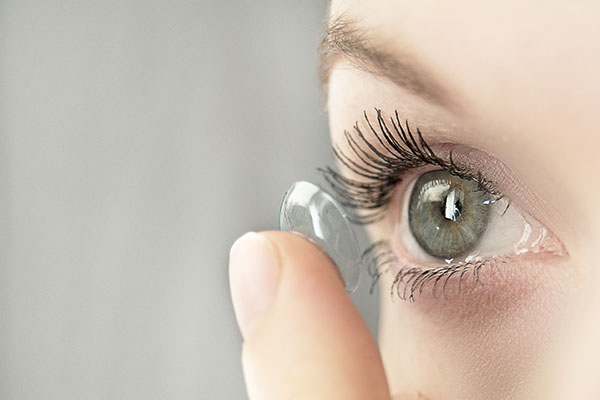
- Scientists have created contact lenses that allow wearers to see infrared light, a breakthrough previously only possible with bulky night-vision equipment.
- The lenses use transparent nanoparticles to convert near-infrared light into visible colors, seamlessly integrating with normal vision without requiring external power.
- This technology could revolutionize fields like military operations, medical diagnostics, and search-and-rescue missions by enabling infrared detection in real time.
- The lenses also hold promise for helping people with color blindness by translating invisible wavelengths into perceivable colors.
- While current prototypes detect only bright infrared sources, researchers are working to improve sensitivity and resolution for broader real-world applications.
In a stunning leap forward for wearable technology, scientists have developed contact lenses that allow wearers to see infrared light—a feat previously impossible for the human eye. Researchers from the University of Science and Technology of China, in collaboration with the University of Massachusetts Chan Medical School, have embedded transparent, power-free lenses with nanoparticles that convert near-infrared wavelengths into visible light. This breakthrough could revolutionize everything from military operations to medical diagnostics while offering new hope for those with color blindness.
Unlike bulky night-vision goggles, which require power and distort natural vision, these lenses seamlessly integrate infrared detection into normal sight. "Our research opens up the potential for non-invasive wearable devices to give people super-vision," said neuroscientist Tian Xue, senior author of the study published in Cell. The technology could also enable encrypted infrared messaging, aid first responders in low-visibility conditions, and even help surgeons detect tumors without relying on external monitors.
How the lenses work
The human eye perceives only a tiny fraction of the electromagnetic spectrum—wavelengths between 400 and 700 nanometers. Infrared light, which spans longer wavelengths, remains invisible without assistance. Traditional night-vision devices amplify light electronically, but the new lenses use "upconversion nanoparticles" to absorb near-infrared light and re-emit it as visible red, green, or blue light.
"Over half of the solar radiation energy, existing as infrared light, remains imperceptible to humans," said researcher Yuqian Ma. The nanoparticles, embedded in soft contact lens material, allow wearers to detect infrared signals even with their eyes closed, since eyelids block less infrared than visible light.
In tests, participants could recognize Morse code-like infrared flashes and distinguish shapes. "It's totally clear cut: without the contact lenses, the subject cannot see anything, but when they put them on, they can clearly see the flickering of the infrared light," Xue noted.
Potential applications
Although the lenses aren’t sensitive enough for thermal imaging, their implications are vast. Gang Han, a nanoparticle researcher involved in the study, told ABC News that the lenses could help rescuers navigate smoke-filled environments or aid surgeons by making infrared markers visible during operations. "What's special about our contact lenses is that they let you see infrared light in color—like red, green and blue—so you can tell different things apart more easily," Han said.
Another promising application is assisting those with color blindness. By converting undetectable wavelengths into visible hues, the lenses could effectively "translate" colors for people with certain types of color vision deficiency. "By converting red visible light into something like green visible light, this technology could make the invisible visible for color-blind people," Xue explained.
Current prototypes only detect bright infrared sources, like LEDs, but researchers aim to improve sensitivity for real-world use. Future iterations may also enhance spatial resolution, allowing wearers to discern finer details. Safety testing is ongoing, though initial trials in humans and mice showed no toxicity.
As with any emerging technology, questions remain about long-term effects and accessibility. But the potential for enhancing human perception without invasive procedures or cumbersome gear marks a significant step toward merging biology with cutting-edge innovation.
Sources for this article include:
Please contact us for more information.












